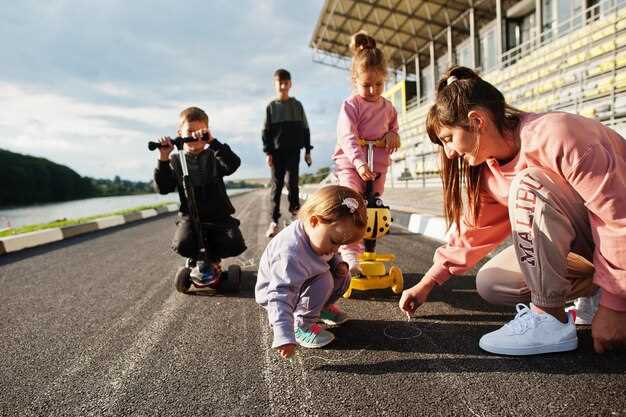
Participating in a local amateur racing event is an exhilarating way to immerse yourself in the grassroots racing community. These events not only give you a chance to showcase your driving skills but also allow you to connect with fellow racing enthusiasts who share your passion. Whether you’re a seasoned driver or a curious newcomer, understanding the steps to join such an event can enhance your experience and enjoyment.
First and foremost, it’s essential to research the various types of racing events available in your area. From karting to dirt track racing, each format appeals to different skill levels and preferences. Many local communities host regular amateur races, which provide a welcoming atmosphere for beginners and seasoned drivers alike. Websites, social media pages, and community forums can be invaluable resources for finding these events.
Next, familiarize yourself with the requirements and regulations of the events you’re interested in. Each racing organization may have distinct guidelines regarding vehicle specifications, safety gear, and participant eligibility. This knowledge will ensure that you prepare adequately and comply with all necessary rules, allowing you to focus on the thrill of competition without any last-minute surprises.
Finding Local Racing Events and Understanding Requirements

Participating in grassroots racing events is an exhilarating way to immerse yourself in the motorsport community. To get started, research local racing organizations, clubs, and tracks that frequently host amateur competitions. Utilize online resources such as social media groups, forums, and websites dedicated to motorsport enthusiasts to discover upcoming events. Pay attention to community boards and local motor clubs, as they often post information about grassroots racing opportunities.
Once you’ve identified potential events, carefully review each event’s signup requirements. These may include specific vehicle specifications, safety gear, and age restrictions. Ensure that your vehicle meets the required standards, as modifications might be necessary for competitive participation. Additionally, familiarize yourself with safety protocols, as many events mandate certain safety equipment for drivers and vehicles. This may involve having an approved helmet, racing suit, and seatbelt system in place.
Don’t hesitate to reach out to event organizers or more experienced racers for insights and guidance. They can provide valuable information on the registration process and help clarify any uncertainties you have about requirements. By being well-informed and prepared, you can ensure a smooth signup experience and focus on enjoying the thrill of the race.
Completing the Signup Process and Preparing Your Vehicle
Participating in grassroots racing events requires a well-structured signup process and thorough preparation of your vehicle. Start by visiting the official website or local racing association to find relevant information about the upcoming events. Most grassroots organizations have an online signup portal where you can complete your registration.
Registration typically involves the following steps:
- Fill out the registration form: Provide accurate personal information, including your name, contact details, and experience level.
- Provide vehicle information: Include details about your racing vehicle, such as make, model, year, and any modifications made.
- Choose the correct category: Select the appropriate class based on your vehicle and skill level to ensure fair competition.
- Pay the entry fee: Be prepared to pay a nominal fee, which usually helps cover event costs and insurance.
Once you’ve completed the signup process, focus on preparing your vehicle. Attention to detail is essential. Begin by ensuring that your car meets the specific safety requirements mandated by the racing organization.
Key preparation steps include:
- Inspect safety equipment: Check your seat belts, helmet, and any additional safety gear to ensure they are compliant with the racing standards.
- Perform a thorough mechanical check: Examine the engine, brakes, tires, and suspension system to make sure everything is in optimal working condition.
- Weight and balance adjustments: Consider adjusting your vehicle’s weight distribution to enhance performance on the track.
Lastly, take the time to familiarize yourself with the event rules and regulations. Being well-informed not only enhances your readiness but also contributes to a safer and more enjoyable racing experience. Completing the signup process and properly preparing your vehicle are crucial steps in becoming a successful participant in local amateur racing events.
Embracing the Racing Community and Enhancing Your Skills

Joining a local amateur racing event offers not only the thrill of competition but also an opportunity to immerse yourself in a vibrant community. Engaging with fellow racers allows you to exchange tips and strategies, making it easier to improve your racing skills. Whether you are a novice or have some experience, becoming part of this community can significantly enhance your performance.
Networking is a key aspect of racing. By participating in events, you will meet individuals who share your passion. These connections can lead to valuable mentorships, where experienced racers share insights about techniques, car setups, and optimal racing lines. Be open to advice and don’t hesitate to ask questions; the racing community is typically welcoming and eager to help newcomers.
Additionally, consider participating in local workshops or training sessions organized within the community. These events often feature seasoned racers who provide hands-on instruction, allowing you to practice specific skills in a controlled environment. This practice is invaluable for your growth as a racer. Signup for these opportunities whenever possible to gain additional knowledge and hands-on experience.
Moreover, attending races–not just as a competitor but also as a spectator–can be immensely beneficial. Observe the techniques employed by different racers, taking mental notes on their approach to turns, acceleration, and braking. This observation will enrich your understanding of racing dynamics, further enhancing your ability to compete effectively.
Finally, don’t underestimate the power of teamwork. Collaborate with fellow racers to form small groups where you can discuss your experiences and practice together. Working with peers not only boosts motivation but also fosters a sense of camaraderie that is essential for any racing community. Embrace this environment, and you will find that both your skills and your enjoyment of the sport will flourish.











